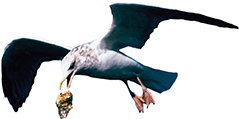Figure 12 Some gulls use energy conversion to obtain food by dropping oysters onto rocks. Applying Concepts Where is the oyster's potential energy greatest? Where is its kinetic energy greatest?

Figure 13 Pendulum clocks use pendulums to maintain accurate time.

Energy Conversions
One of the most common energy conversions is between potential energy and kinetic energy.  The gravitational potential energy of an object is converted to the kinetic energy of motion as the object falls. That's what happens when an avalanche brings tons of snow from the top of a mountain to the valley floor. Similarly, when you release a compressed spring, the elastic potential energy of the spring is converted into kinetic energy as the object falls. That's what happens when an avalanche brings tons of snow from the top of a mountain to the valley floor. Similarly, when you release a compressed spring, the elastic potential energy of the spring is converted into kinetic energy as the spring expands. Conversions between kinetic and potential energy can happen in both directions, that is, from kinetic to potential energy, or from potential to kinetic energy.
The gravitational potential energy of an object is converted to the kinetic energy of motion as the object falls. That's what happens when an avalanche brings tons of snow from the top of a mountain to the valley floor. Similarly, when you release a compressed spring, the elastic potential energy of the spring is converted into kinetic energy as the object falls. That's what happens when an avalanche brings tons of snow from the top of a mountain to the valley floor. Similarly, when you release a compressed spring, the elastic potential energy of the spring is converted into kinetic energy as the spring expands. Conversions between kinetic and potential energy can happen in both directions, that is, from kinetic to potential energy, or from potential to kinetic energy.
Some gulls use energy conversion to obtain food. Oysters are a food source for gulls. However, it is difficult for a gull to break open an oyster's hard shell with its beak. Unfortunately for the oyster, gulls have learned a clever way to use gravitational potential energy, as shown in Figure 12. A hungry gull picks up an oyster and flies high into the air directly over some rocks. The gull does work on the oyster by raising it against the force of gravity, thereby increasing the oyster's potential energy. While over the rocks, the gull lets the oyster fall. As the oyster falls, its gravitational potential energy is converted into kinetic energy. The oyster picks up speed until it hits the rocks. The impact breaks open the shell. The gull then swoops down to enjoy its meal.
Energy Conversion in Pendulums
At the lake, you grab a rope hanging from a tree branch. With a yell, you swing down toward the lake, and pick up speed until you land with a giant splash. A rope swing is an example of a pendulum. A pendulum consists of a weight swinging back and forth from a rope or string.
Pendulums were used in the first truly accurate clocks. The Dutch scientist Christiaan Huygens (1629—1695) made the first pendulum clock in 1656. Pendulum clocks such as the one shown in Figure 13 make use of the fact that the time it takes for a pendulum to swing back and forth once is precisely related to its length.
Kinetic energy and potential energy undergo constant conversion as a pendulum swings. At the highest point in its swing, the pendulum is momentarily motionless as it changes direction. At this point, the weight at the end of the pendulum has zero kinetic energy and maximum potential energy.
As the pendulum swings downward, potential energy is converted to kinetic energy. At the bottom of the swing, the pendulum has maximum kinetic energy and zero potential energy. The pendulum then moves upward again, repeating the process. Eventually, frictional forces slow down the pendulum. In a clock, a spring mechanism or hanging weights provide energy to keep the pendulum swinging despite the effects of friction.




